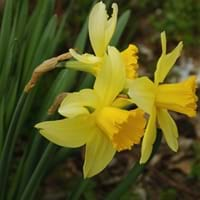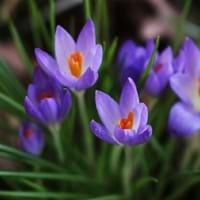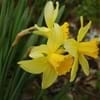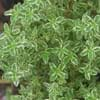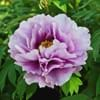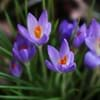Life Span
Perennial
Perennial
Type
Bulb
Bulb, Flowering Plants
Origin
Asia, Central Asia, Eastern Asia, Southwest Europe
Aegean Islands, Central Asia, Middle East, North Africa, Southern Europe, Western China
Types
Accent, Acropolls, Cassata,Dellbes, Flower parade, Hawera
Crocus abantensis, Crocus adanensis, Crocus biflorus, Crocus chrysanthus, Crocus korolkowii
Habitat
Hillside, Open scrub, River side, Rocky areas, Scrubs, Woods
Scrubs, Woods
USDA Hardiness Zone
3-9
3-8
Sunset Zone
A2, A3, 1a, 1b, 2a, 2b, 3a, 3b, 4, 5, 6, 7, 8, 9, 10, 11, 12, 13, 14, 15, 16, 17, 18, 19, 20, 21, 22, 23, 24
1a, 1b, 2a, 2b, 3a, 3b, 4, 5, 6, 7, 8, 9, 10, 11, 12, 13, 14, 15, 16, 17, 18, 19, 20, 21, 22, 23, 24
Habit
Clump-Forming
Clump-Forming
Minimum Height
Not Available
Flower Color
Ivory, Lemon yellow, Peach, White, Yellow, Yellow green
Blue, Orange, Pink, Purple, White, Yellow
Flower Color Modifier
Bicolor
Not Available
Fruit Color
Not Available
Not Available
Leaf Color in Spring
Green
Green
Leaf Color in Summer
Green
Not Available
Leaf Color in Fall
Green
Green
Leaf Color in Winter
Green
Green
Leaf Shape
Linear
Grass like
Plant Season
All year
Spring, Winter
Sunlight
Part sun
Full Sun, Part sun
Growth Rate
Medium
Medium
Type of Soil
Clay, Loamy, Sandy
Loamy
The pH of Soil
Acidic
Neutral, Slightly Acidic
Soil Drainage
Well drained
Well drained
Bloom Time
Early Spring, Late Spring, Spring
Spring, Winter
Tolerances
Black Walnut Toxicity
Drought
Where to Plant?
Ground
Container, Ground, Pot
How to Plant?
From bulbs
From bulbs, Grafting, Seedlings
Plant Maintenance
Medium
Medium
Watering Requirements
It cannot sustain wet-feet, Keep the ground moist but not water-logged, Water Deeply, Water when soil is dry
Form a Soil ring to water efficiently, Water Deeply, Water twice a day in the initial period, Water when soil is dry
In Summer
Lots of watering
Lots of watering
In Spring
Moderate
Moderate
In Winter
Average Water
Average Water
Soil pH
Acidic
Neutral, Slightly Acidic
Soil Type
Clay, Loamy, Sandy
Loamy
Soil Drainage Capacity
Well drained
Well drained
Sun Exposure
Part sun
Full Sun, Part sun
Pruning
Cut or pinch the stems, Prune to control growth, Remove dead leaves, Remove dead or diseased plant parts
No pruning needed in the early stages, Prune to stimulate growth, Remove dead or diseased plant parts, Requires little pruning
Fertilizers
All-Purpose Liquid Fertilizer
All-Purpose Liquid Fertilizer
Pests and Diseases
Basal rot, Crown rot, Fire, Leaf spot, Scorch, Viruses
Aphids, Botrytis Blight, Mushroom root rot, Narcissus Basal Rot, Narcissus Bulb Fly, Slugs, Snails, Tulip Fire, Tulip Viruses
Plant Tolerance
Drought
Drought
Flower Petal Number
Single, Double
Single
Foliage Texture
Medium
Fine
Foliage Sheen
Matte
Glossy
Attracts
Not Available
Not Available
Allergy
Asthma, Rhinoconjunctivitis
Not Available
Aesthetic Uses
Showy Purposes
Not Available
Beauty Benefits
Not Available
Not Available
Environmental Uses
Air purification
Air purification
Medicinal Uses
Asthma, Cold, Cough, Vomiting
Arthritis, Gout
Part of Plant Used
Flowers, Leaves
Whole plant
Other Uses
Showy Purposes
Not Available
Used As Indoor Plant
No
No
Used As Outdoor Plant
Yes
Yes
Garden Design
Not Available
Not Available
Botanical Name
Narcissus
Crocus Longiflorus
Common Name
Daffodil
Crocus
In Hindi
हलका पीला
Crocus
In German
Narzisse
Krokus
In French
Jonquille
Crocus
In Spanish
Narciso
Azafrán
In Greek
ασφόδελος
κρόκος
In Portuguese
Abrótea
Açafrão
In Latin
Asphodelus
Erocum
Phylum
Magnoliophyta
Magnoliophyta
Class
Liliopsida
Liliopsida
Order
Asparagales
Asparagales
Family
Amaryllidaceae
Iridaceae
Clade
Angiosperms, Monocots
Angiosperms, Monocots
Tribe
Narcisseae
Not Available
Subfamily
Amaryllidoideae
Crocoideae
Importance of Daffodil and Crocus
Want to have the most appropriate plant for your garden? You might want to know the importance of Daffodil and Crocus. Basically, these two plants vary in many aspects. Compare Daffodil and Crocus as they differ in many characteristics such as their life, care, benefits, facts, etc. Every gardener must at least have the slightest clue about the plants he wants to plant in his garden. Compare their benefits, which differ in many ways like facts and uses. The medicinal use of Daffodil is Asthma, Cold, Cough and Vomiting whereas of Crocus is Arthritis and Gout. Daffodil has beauty benefits as follows: Not Available while Crocus has beauty benefits as follows: Not Available.
Compare Facts of Daffodil vs Crocus
How to choose the best garden plant for your garden depending upon its facts? Here garden plant comparison will help you to solve this query. Compare the facts of Daffodil vs Crocus and know which one to choose. As garden plants have benefits and other uses, allergy is also a major drawback of plants for some people. Allergic reactions of Daffodil are Asthma and Rhinoconjunctivitis whereas of Crocus have Not Available respectively. Having a fruit bearing plant in your garden can be a plus point of your garden. Daffodil has no showy fruits and Crocus has no showy fruits. Also Daffodil is not flowering and Crocus is flowering. You can compare Daffodil and Crocus facts and facts of other plants too.
